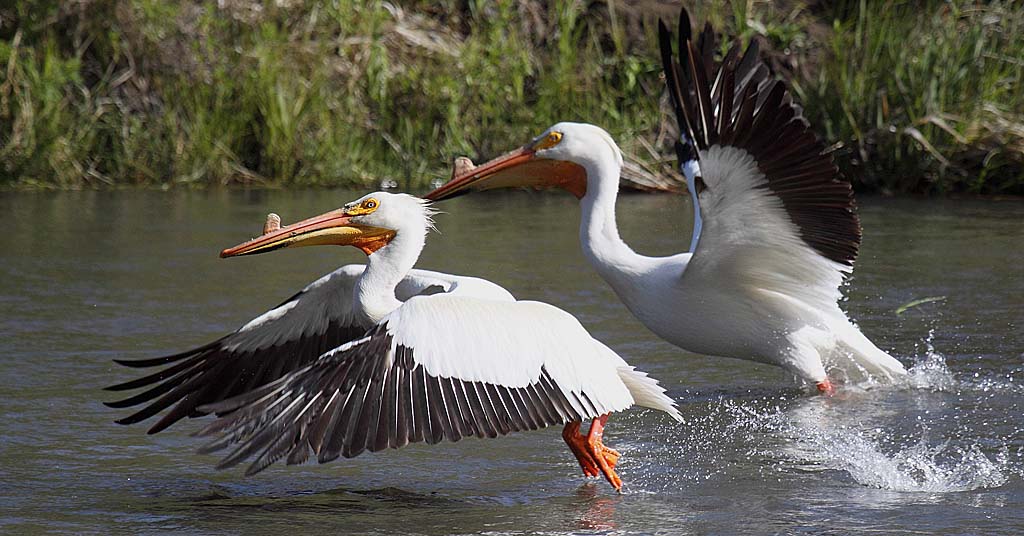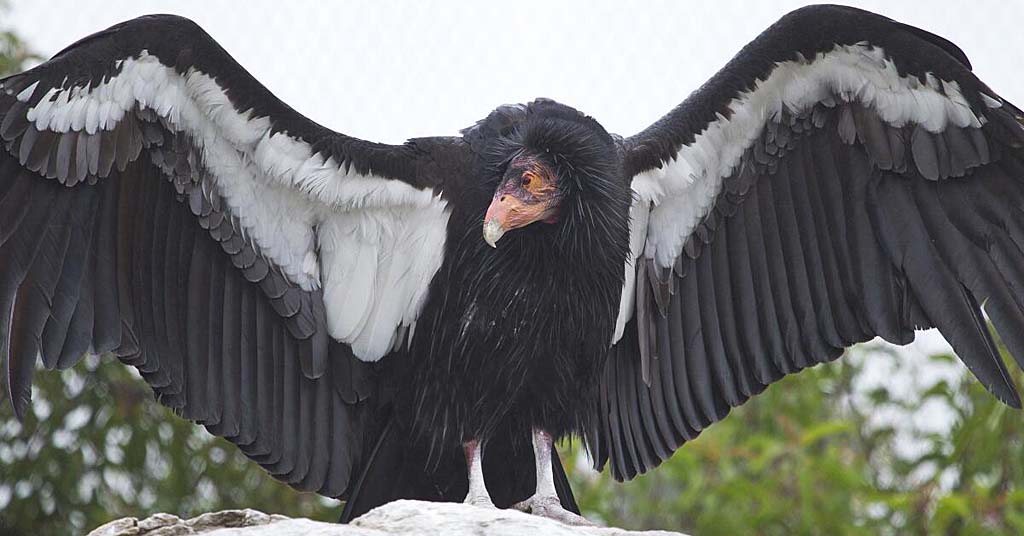Human management, predators, avian flu, nesting habitat loss and climate change have contributed to the saga of the Caspian tern
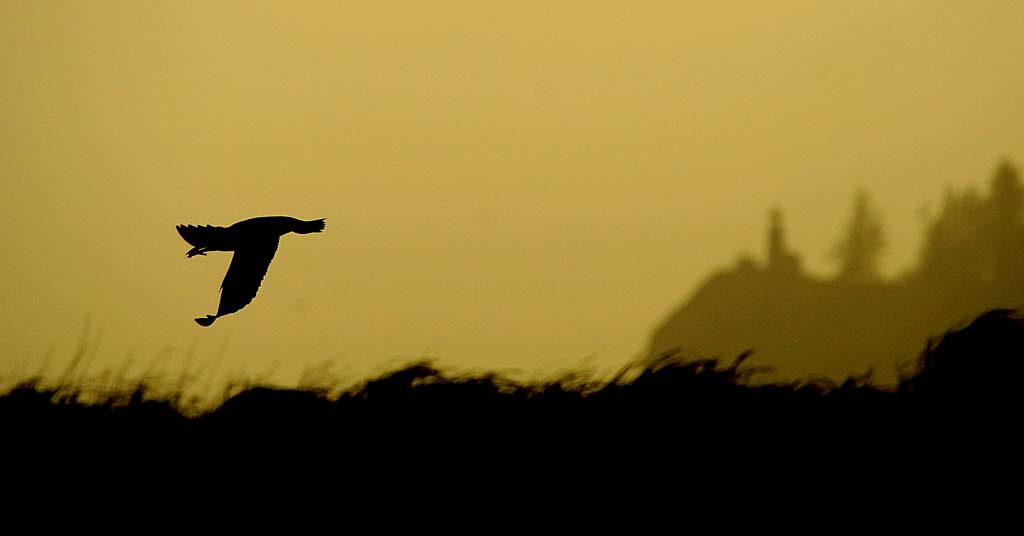
Paradise cost: Conditions on East Sand Island in the Columbia River Estuary were perfect for Caspian terns. Until they weren’t. Photo: Adam Peck-Richardson/OSU
K.C. Mehaffey. June 6, 2024. A population of roughly 10,000 pairs of Caspian terns that’s nested on a manmade island in the Columbia River estuary for decades is now a fraction of its former size.
Once home to the world’s largest colony comprising 60 to 70% of Caspian terns in the Pacific Flyway, East Sand Island—a low-lying, 62-acre island in the Columbia River Estuary just offshore from Chinook, Wash.—attracted just 524 nesting pairs last year.
The island was created from dredged material to maintain a channel for vessels traveling up and down the Columbia River.
In 2005, regional fish and wildlife managers called for reducing nesting pairs of Caspian terns on the island to between 3,125 and 4,375 pairs.
The action was needed “to reduce tern predation on juvenile salmonids in the Columbia River Estuary,” according to an environmental impact statement by federal agencies.
Over a 20-year period, biologists dissuaded the birds from producing their young there by removing the sandy habitat they need for laying eggs and raising chicks.
The management plan anticipated relocating at least half of the smolt-hungry Caspian tern population to new habitat along the Pacific Coast, leaving the colony in the estuary at a level that would have far less impact on the threatened and endangered young salmon and steelhead that the terns were gobbling up in great numbers as they migrated to the ocean.
By 2015, management activities successfully reduced the nesting area to one acre, and by 2017, the target for the number of breeding pairs nesting on the island was reached.
Then nature took over. Predators, avian influenza and climate change began exacting a toll on Caspian tern colonies throughout the Pacific Flyway. These impacts hit the largest colony at East Sand Island.
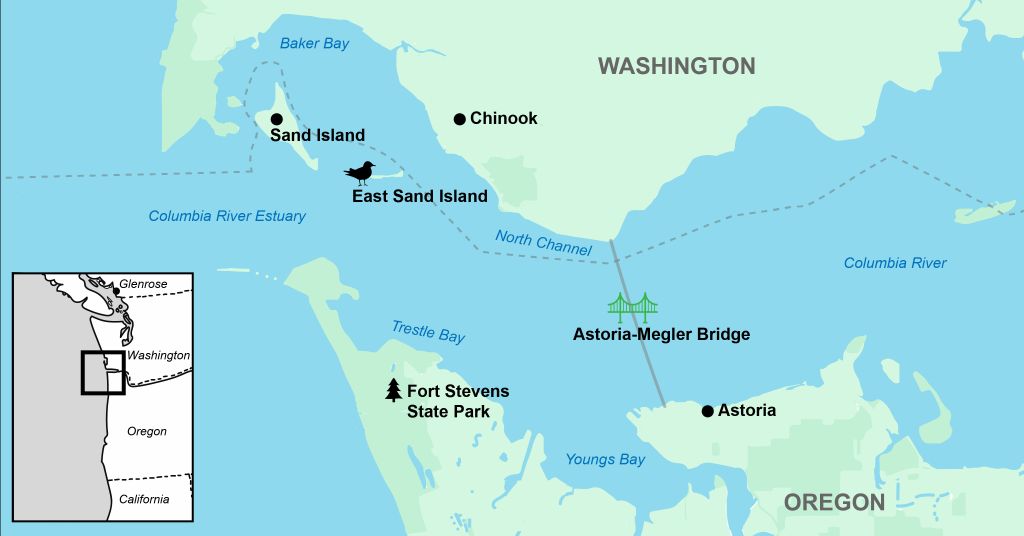
East Sand Island and Columbia River Estuary. Map: Mackenzie Miller
“The latest estimate of the Pacific Flyway population of Caspian terns in 2021 indicates that, since tern management in the estuary began in 2008, the population has declined by more than 50%,” says a 2023 paper published in Fisheries Magazine on Caspian tern management in the Columbia River Basin.
Now, fish and wildlife managers are talking about how to ensure colonies of this native West Coast bird remain viable, while maintaining a reduced impact on fish that are listed under the Endangered Species Act.
The U.S. Fish and Wildlife Service (USFWS) is conducting a census of Caspian terns throughout the Pacific Flyway, but final population estimates won’t be available until next year.
Researchers and biologists involved with managing these birds say they don’t need to see results of the new survey to know it’s time to come up with a new plan for Caspian terns.
“My personal opinion is, I don’t think more information is needed. I think additional information from the 2024 census is likely to indicate a continuation of the trend that is already apparent,” Don Lyons, director of conservation science at the Audubon Seabird Institute, tells Columbia Insight.
He adds that while it’s not an immediate crisis, the downward trend has been rapid and is unlikely to change without altering current management of the species.
Black-capped salmon eaters
Caspian terns are gull-sized birds that feed almost entirely on fish. They’re not picky about what kind of fish they eat, and their diet varies significantly depending on where the colony is located.
Those in marine environments rely more on forage fishes, such as anchovies and herring.
Those in the Columbia River Estuary feast on juvenile salmon and especially steelhead, which stay closer to the surface and are easy for the terns to catch.
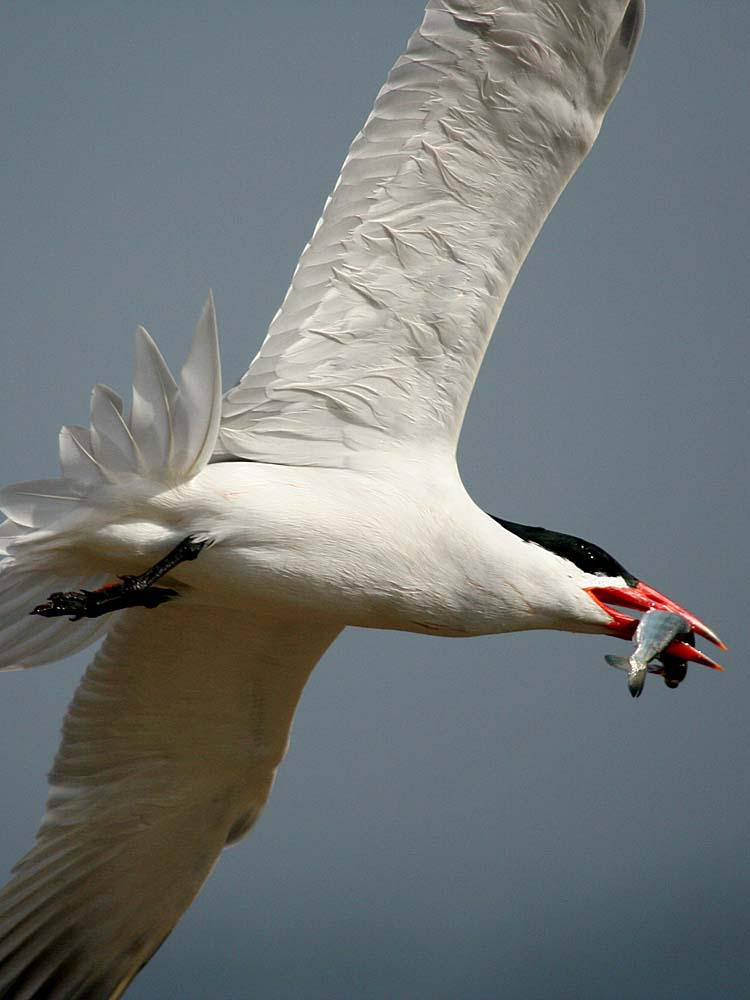
Smolt snack: Caspian terns feed almost exclusively on fish. Including endangered ones, such as this salmon smolt. Photo: Adam Peck-Richardson/OSU
James Lawonn, an avian biologist and avian predation coordinator for the Oregon Department of Fish and Wildlife, says Caspian terns have evolved to nest in environments that don’t have consistent resources available, and have adapted to the need to frequently shift the colony’s nesting sites.
Terns nest in colonies on the ground, in un-vegetated sand or gravel, and prefer isolated areas, especially islands free from mammal predators.
In the first half of the 20th century, Caspian terns in the Pacific Flyway largely nested at inland lakes and marshes. But in the latter half of the century, their breeding habitat shifted to coastal sites, including the Columbia River Estuary.
During this period, the population throughout the flyway jumped from about 3,500 nesting pairs in 1960 to about 14,000 pairs in 2000.
According to Real Time Research—a cooperative research partnership formed to investigate the fish-eating birds and their impacts on juvenile salmonids on the Pacific Coast—Caspian terns first started nesting on East Sand Island in 1984, a year after the U.S. Army Corps of Engineers deposited freshly dredged material at the tip of the island.
But when vegetation covered their nesting site, the colony moved to nearby Rice Island, 16 miles farther upstream, where the colony grew dramatically.
Due to the high impact the colony was having on juvenile salmon and steelhead migrating to the ocean, resource managers decided to relocate the colony back to East Sand Island with the expectation that they’d have more fish species to choose from, resulting in a smaller impact on ESA-listed fish.
Since 2001, all Caspian terns in the estuary have nested on East Sand Island—which has also supported a large colony of double-crested cormorants and gulls.
“Caspian terns are a very impressive bird—a wonderful bird to have along our coast and interior wetlands,” says Lyons. “There’s every reason to want to keep them present across the landscape. When you see declines like this that are linked to human activity, I think we’re beholden to at least understand that, and make some conscious decisions about where the population is headed.”
Did management work too well?
Research into the impact that Caspian terns were having on juvenile salmon and steelhead migrating to the ocean began in 1997, when about two-thirds of the Caspian tern population was nesting in the Columbia River Estuary.
Scientists discovered that this mega-colony was consuming up to 16 million smolts annually.
In some years, and for some populations of ESA-listed fish, the terns were eating close to one-quarter of the smolts that survived the gauntlet of downstream dangers and successfully made it to the estuary.
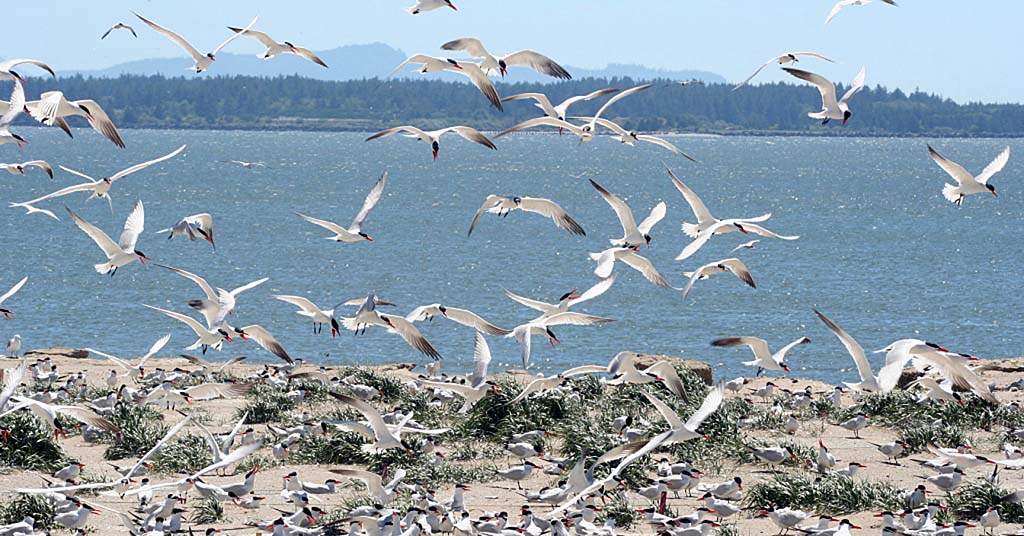
Home base: Caspian terns on East Sand Island. Photo: USACE
Caspian terns at two much smaller colonies in the Columbia Plateau—at Goose Island in the Potholes Reservoir near Moses Lake, Wash., and on Crescent Island in the mid-Columbia River near Wallula, Wash.—were also gobbling up juvenile salmon and steelhead.
Because there are fewer food sources upstream, steelhead predation rates by the two smaller colonies were of the same magnitude as the much larger colony on Rice or East Sand islands.
“The cumulative impacts of Caspian tern predation on smolt survival in the Basin were mostly a result of the confluence of two anthropogenic factors that continue to operate in the basin,” the Fisheries Magazine paper says.
These factors were a reliable and stable food source of more than 100 million hatchery-reared salmon and steelhead released into the river every year; and nesting habitat free from mammal predators created by dredged material to maintain shipping channels.
Two decades ago, fish managers in the region came up with two management plans to reduce the number of smolts being eaten by Caspian terns. Their goals were to greatly reduce the size of their breeding colonies and redistribute them to alternative sites outside the Columbia River Basin.
Nine alternative tern sites made up of islands ranging from one-third of an acre to two acres were built along the coast of Oregon and northern California, where biologists believed the terns would have minimal impact on ESA-listed salmonids.
“Those sites were constructed, and many of them have been used and continue to be used,” Allen Evans, a research biologist at Real Time Research, tells Columbia Insight.
After years of working to attract the birds to new sites using social attraction and predator control, and incrementally reducing the area suitable for nesting on East Sand Island to one acre, the size of the nesting site reached its goal in 2015.
Evans notes the management plan for Caspian terns was completely non-lethal. But while salmon managers were working to reduce the number of birds nesting on East Sand Island, the world’s largest population was hit by predators.
By 2017, bald eagles had discovered the site. No baby terns survived that year and in several subsequent years.
“I think it’s safe to say the population decline resulted from a combination of factors. But obviously, a lack of chicks, fledglings and eventually adults from what was formerly the biggest colony in the world contributed,” says Evans.
Eagles, coyotes, gulls
Lawonn says biologists have seen virtually no chicks survive to become fledglings on East Sand Island since 2017.
He says modeling by regional avian biologists suggests that—without production from the island’s colony—the population will continue to decline to uncertain levels.
While Caspian tern abundance is down, the abundance of bald eagles—a major Caspian tern predator—has increased substantially across the West.
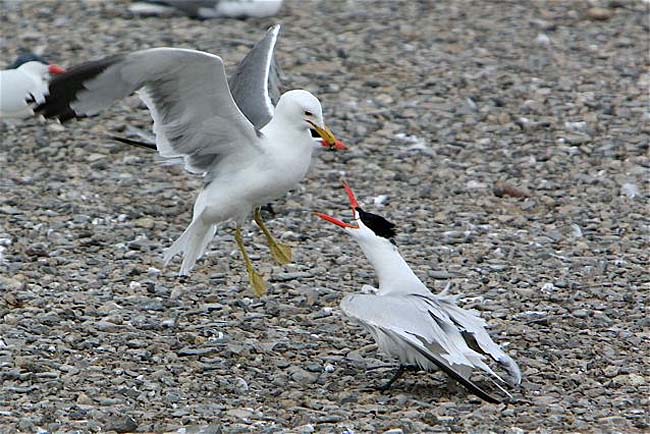
Get back: A Caspian tern defends its nest from a seagull. Caspian terns often flee from more threatening invaders, such as bald eagles. Photo: OSU
Researchers say it’s possible that terns were able to colonize so successfully on East Sand Island because predators were absent.
Now, with eagles on the island, terns are finding it difficult to breed successfully.
Eagles will kill adult terns—terns know this and will leave their nests to escape them.
When the terns fly away, opportunistic seagulls eat the eggs or chicks.
The alternative islands created for terns are underutilized, at least partly because of predators. Some islands have been struck by drought, and in years when there’s not enough water, they become connected to the shore, giving coyotes and other mammal predators a pathway to the birds and their ground nests.
Avian flu strikes
At least two colonies of Caspian terns in the West were hit by avian influenza in 2023, and between them at least 2,000 individuals died.
In the Columbia River Basin, at least 300 adults were killed by last year’s outbreak.
“That’s a minimum estimate because that’s how many carcasses were found. It is certain that additional carcasses were not detected,” says Lawonn.
Many carcasses were found in the area where the tide pushes floating objects to shore, but others likely were carried out to sea, he says.
But there were more avian influenza incidences.
In September 2023, the Washington Department of Fish and Wildlife reported an outbreak among shorebirds and seals near Fort Flagler State Park in Puget Sound. It started in July 2023 and by Sept. 1, staff had removed more than 1,700 dead Caspian terns and gulls from Rat Island and adjacent shores near the park.
A news release from the agency said Caspian terns with bird flu were documented near Port Everett and Port of Tacoma.
The outbreak prompted USFWS to conduct this year’s Caspian tern census across the West.
“The upshot here is the regional population has declined by probably 50% or more as of the 2021 survey, and the mortalities last year is additional to that,” says Lawonn.
Despite concerns related to last year’s outbreak, Lawonn says he’s not aware of any colonies infected with bird flu this year.
Birds on a hot Seattle roof
The impact of climate change is also part of the bigger picture for Caspian terns.
Evans says Caspian terns are nesting in parts of Alaska where there were no documented nesting colonies two or three decades ago.
“It seems to be evident they’re expanding their range, presumably due to climate change and other factors,” he says.
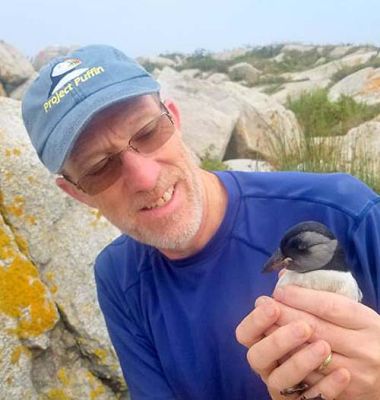
Don Lyons with Atlantic puffin chick. Photo: OSU/Hatfield Marine Center
Joe Liebezeit, assistant director of statewide conservation for the Bird Alliance of Oregon, says the warming ocean has become a concern for many seabirds. He says dependable forage fish are moving to cooler parts of the ocean, or experiencing more frequent cyclical highs and lows in their populations.
Ocean conditions don’t impact the birds directly but have a major impact on their food supply.
This changes which species are doing well in the offshore environment.
“Fish will try to stay in their preferred water temperature, and that might mean moving north, or it might mean going deeper,” he says.
Either way, forage fish have become much less accessible to seabirds.
There have also been visible examples of direct impacts from climate change.
During the June 2021 heat wave, people in West Seattle saw Caspian tern chicks that died or were injured after jumping off a building—likely because of record-breaking temperatures.
“Even if a chick survived the jump, that put them at risk to predators. They may have gotten separated from their parents and not reconnected. And probably some chicks died from heat stress on the roof,” says Lyons.
He says the birds are developing colonies on rooftops or fenced-in areas in cities from Tacoma to Vancouver, B.C. These terns are close to a food source and have discovered rooftops or fenced-in areas where they can nest and avoid predators.
“They’ve been habitat-limited, so they have colonized things that are not natural habitat at all,” he says.
Long-term drought is also taking its toll on Caspian terns. Many of their nesting sites—including those created as alternatives for the East Sand Island colony—are now accessible to mammal predators or no longer support the fish populations they need to survive.
Combined with water management decisions that have prioritized agriculture and ESA-listed fish over birds there isn’t enough water left to support the wetlands needed for species like Caspian terns, according to Lyons.
What’s next?
From the Bird Alliance of Oregon’s perspective, the region has been managed more for the benefit of fish than for birds.
“I think that frustrates us,” says Liebezeit. “It was the biggest [Caspian tern] colony on the West Coast and it no longer is.”
However, he says, it’s hard to manage terns because no one knows how many of them lived in the West prior to European settlement.
“We’re making these decisions under a short timeline, and we don’t know the historical context,” says Liebezeit.
The Bird Alliance of Oregon would like to see a management plan that does a better job balancing needs of the birds with those of fish.
Current management practices have reduced steelhead predation by terns in the estuary by about 70%.
But Evans and his team recommend in their 2023 report that actions should be taken to halt the decline of the tern colony on East Sand Island.
Those actions could include enhancing the sandy area designated for tern nesting, using limited lethal control of gulls and monitoring the tern colony to determine other factors that may be limiting the colony’s size and nesting success.
The habitat is available to support from 3,125 to 4,375 nesting pairs, but the birds aren’t fully utilizing it, says Evans.
“I think, certainly, the population would be more sustainable in the long term if there were still a relatively large population that’s productive,” he says.

Adept at adapting: Some Caspian terns, like this one with a herring in Icy Bay, Alaska, are beginning to move northward. Photo: Adam Peck-Richardson
The team’s annual report recommends providing alternative nesting sites for terns—these could be located in Gray’s Harbor, the Strait of Juan de Fuca or Puget Sound—to complement tern sites already created by the Corps.
Lawonn notes regional avian predation forums have discussed new locations where terns might nest, mostly in Puget Sound and along the Washington coast where they could thrive and have a low impact on salmon or steelhead.
“East Sand Island, despite it being very important for the region, still isn’t exactly the ideal location for a large colony,” he says. “Even a population of 3,000 nesting pairs has a pretty considerable impact on salmon, and particularly steelhead.”
He says avian predation groups are working with partners, including the Corps, to figure out how to best manage the colonies in Oregon and other places in the West.
“We really need another superstar colony out there, and that colony is going to need some adaptive management in order for it to remain a colony that is characterized by high productivity,” he says.
To Lawonn, managing Caspian terns across the West isn’t only good for the birds, but also for ESA-listed fish in the Columbia River Basin.
“No matter what side you’re on, it’s good policy to do what needs to be done to maintain the region’s tern population,” he says.




